This is Yun Hai Taiwan Stories, a newsletter about Taiwanese food and culture by Lisa Cheng Smith 鄭衍莉, founder of Yun Hai. If you aren’t yet a subscriber, sign up here.
In my last letter, I mentioned we’d be launching “about as traditional of an ingredient as there can be on this earth.” This week I’m here to tell you that it’s salt. That’s right, the top-selling seasoning of the past four millennia is finally in stock at Yun Hai!
And it’s not just any salt, it’s Taiwanese solar sea salt, which has been produced in southwest Taiwan since the 1600s. This old way of making salt harnesses the passive power of Taiwan’s coastal plains, but in the early 2000s, it almost disappeared. Read on.
Oh, and a few more things: For the Tatung users out there: we’ve got a few more replacement parts in. For my brief cameo in Food and Wine scroll to the very end. And, of course, HAPPY PRIDE!!!
One day in April, I was in Tainan with a day to myself, feeling very slow and lazy.
I was trying to decide if I should make the hour-long pilgrimage to the Taiwan Salt Museum in Qigu District 七股區 or just go eat something instead. I looked up a few reviews and came across this:
Reasonable entrance fee? Clean washroom? The ultimate irrelevance of hydrocarbons? I had to see it for myself.
I made my way out there and—much to the chagrin of this newsletter’s introduction—found the museum to be closed for renovations. Instead, I spent the day at the neighboring Qigu Salt Mountain, a remnant of Taiwan's once thriving salt industry.
To attract visitors, the 60-foot-tall stockpile of salt has been turned into a pseudo-theme park, with a rotating cast of mascots gracing its gleaming white slopes, and bumper cars and paddle boats below.
The park has regional Taiwanese trappings of the best kind: independently owned food stalls serving things like tofu pudding and tea eggs; a salt art exhibition featuring cute sculptures; a company store highlighting local agricultural products; salt-flavored popsicles made especially for Qigu Salt Mountain; an unmatched selection of muzak on the loudspeakers; and a strong sea wind blowing everybody’s hair back.
Not exactly a museum, but the legacy of salt was everywhere.

Sea salt has been produced in Taiwan for nearly 400 years, dating back to the time of freedom-fighting pirate Koxinga (bet ya 10 bucks he didn’t call Fleur de Sel by the French name). Most of the evaporative salt fields were established in the southwest of Taiwan, a sunny clime with wide flat plains. Over Taiwan’s long history of occupation, the salt fields changed hands from the Chinese to the Japanese and then finally to the current Taiwanese government. Domestic salt production was considered key to food self-sufficiency—the mineral was stockpiled in large mounds like the one at Qigu, in case of conflict or other dire straits.

Solar Salt and the Irrelevance of Hydrocarbons
Walking the remaining salt pools at Qigu, it dawned on me what the reviewer might have meant by “our current age and the irrelevance of hydrocarbons.” The place was full of ingenious primitive technologies, powered by people and passive energy sources. A few of them are listed below.

A network of pools and water-gates: In the fields, a combination of tides, gravity, retaining walls, and gates isolate seawater as it evaporates to higher and higher concentrations. Successive pools are situated at lower elevations, so the water flows easily to the next phase.
Pedal-powered water wheels: In the instance where water had to be moved on an incline, “dragon bone water wheels” 龍骨水車 were used. A wooden chain belt with blades is driven by a pedal-powered shaft, moving the water up and out of the pools.
Mosaic Tile: Salt pans in Taiwan were lined with pottery shards pressed into the clay. These mosaics radiate heat upwards, increasing the evaporative power of each pan. The smooth surface of the tile prevents the salt from sticking to the bottom, and keeps it clean.
This traditional salt is labor-intensive to produce (I am not romanticizing this), but it consumes only minimal energy, employing the passive sources of sea and sun. While I wouldn’t call hydrocarbons irrelevant by a long shot (after all petroleum has shaped the world as we know it and as we don’t), seeing how we used to do things without them lit a fire inside me. What’s primitive can also be contemporary. It’s up to us.
Seawater Bittern and the Origins of Tofu
At the shop, I discovered bittern 鹽滷, the mineral liquid left when salt is removed from concentrated seawater. Bittern has been used to coagulate tofu since tofu was first coagulated. In some histories, it’s even cited as the originating substance of tofu. It's still around, sold under the Japanese name nigari (you've probably seen silken nigari tofu in Tetra Paks at Japanese grocery stores). Some nigari tofu shops are still around Taiwan, too, offering a superb, grainy texture and a unique mineral note.

This was a revelation to me. Though I knew salt was produced across the ancient world, I thought of its manufacture as only adjacent to the development of Asian foodstuffs. But if the history is true, tofu, one of the most important foods in the Chinese diaspora, is descendant from evaporative salt production.
Here’s a video produced by Qigu Salt Mountain that illustrates how to make tofu with bittern. We currently aren’t offering this, but if you think you’d like to make tofu from scratch the ancient way, do let us know.
The Closure of Taiwan’s Salt Fields
I also learned that due to complex environmental and societal pressures stemming from industrialization, modernization, rising labor costs, price depression, and worsening environmental conditions, the salt fields began to struggle from the 1970s and on. Rural folk were moving to the cities for higher paying “knowledge work,” and the fields became more expensive to run. To keep up with demand and maintain lower costs, Taiwan Salt (the public monopoly that produced and sold all salt in the country) began investing in electrodialysis as a means of salt production.
Then, in 2002, Taiwan joined the WTO. Cheaper foreign imports were the final nail in the coffin, and Taiwan Salt closed the centuries-old salt fields across the southwestern plains of Taiwan for good.
So, as the story goes: a four-hundred-year-old, minimally-energy-consumptive source of our most in-demand mineral was replaced by an electromechanical process because of human market constructs and the pressures of modernization. Remember the 1999 WTO protests in Seattle? This was the time, this was the context.
But punk's not dead, because there are a few people in Taiwan who are intent on restoring what was lost. In 2008, the community-founded Budai Cultural Association 布袋嘴文化協會 in Chiayi brought their Zhou Nan Salt Fields 洲南鹽場 back to life.
Introducing Zhou Nan Salt 洲南鹽場
The Zhou Nan Salt Fields of Budai, Chiayi date back to 1824, when they were built to expand Taiwan's growing industry. This was one of Taiwan’s largest salt producing regions; salt villages and communities developed here. Along with fishing, salt made up a large part of the local economy.
Fast forward to 1996, when Budai native 蔡炅樵 Tsai Chiung-Chiao, his wife 沈錳美 Shen Meng-Mei, and a group of like-minded friends founded the Budai Cultural Studio 布袋嘴文化工作室 with the goal to publish a guide map of Budai. The group’s work didn’t end there—they published over 60 monthly newsletters containing historical and literary material about their locale.
When the Zhou Nan Salt Flats in Budai closed in 2001, Tsai and Shen fretted alongside their community. At the time, Tsai says he felt powerless, and could do little more than "take photos of the evaporation ponds, write some essays, and maybe do something perfunctory to mourn their passing."
Before founding the studio, Tsai and Shen were journalists who had written extensively about the history of salt in Taiwan; and Tsai’s family had been salt industry workers in his hometown. They were intent on taking action.
So, in 2006, the Budai Cultural Studio adopted their local salt works and were granted the right by the Ministry of Culture to manage the Zhou Nan fields as a cultural revitalization project. This group grew into the Budai Cultural Association, a formal non-profit with the express goal of restoring and preserving their local cultural legacy and contributing to their community.
Putting the fields back into use was not as simple as opening the floodgates and letting the sea flow in. The fallow land had cracked and dried up, unable to hold seawater any longer. The association recruited elderly salt workers to train a local team in salt knowledge and production. Together with the association, they resalinated the land with 300 tons of salt, relined the salt pans with clay, and relaid much of the mosaic tile lining. It took 6 years to restore the fields to a condition where salt could be produced once again.

Their perseverance paid off—these folks are now making some of the best salt in Taiwan, representing (as they put it) Taiwan's Sea, Land, Wind, Sun, and People. The salt is beloved by many fine dining establishments in Taiwan, like Michelin star restaurant Taïrroir.
When my partner Lillian visited them a few months ago, they shared their vision to uplift Budai as a whole; salt is their starting point. To restore the fields, they relied on grants and subsidies to get back into operation. Now, they hope to become financially independent by increasing the scale of their production, transforming from a non-profit into a cultural enterprise that can improve conditions for the entire Budai area.
Purchasing goods from cultural enterprises like this one is often described as a supportive act. I prefer to think of it as a participatory one. They support us by giving over their talents and energy to stewarding land, craft, and culture. We are but the beneficiaries.
Salt of the Seasons
One of the justifications for moving salt production to electrodialysis was that the traditional way is too slow and weather dependent. Zhou Nan has turned that into a core feature, making and releasing salt according to the weather, taking advantage of the natural (though changing) cycles of the earth. We've sourced four salts from them, each with unique qualities of the season.
Fleur de Sel
A flaky, complex finishing salt.
On sunny days in spring and summer, Fleur de Sel crystals condense thinly on the surface of the sea salt pans and are harvested by hand before evening. With a delicate flavor and a crispy-crunchy-grainy texture, this finishing salt brings out the natural complexity of anything it’s used on.
Frost Salt
An excellent all-purpose sea salt.
In the Chinese lunisolar calendar, seasons are tracked in 24 periods called solar terms. This salt is formed between the 18th term, Frost’s Descent, in Autumn, and the 5th, Qing Ming, in Spring. It crystallizes slowly in the cool weather and has a marine flavor, a uniform grain, and a sweet aftertaste. It's an excellent all purpose salt.
Dunaliella Algae Salt
A bright all-purpose sea salt.
Pink Dunaliella algae grows naturally in the Zhou Nan salt fields during the rainy summer season, and enriches the salt harvest with antioxidants and a bright—almost tart—umami flavor. It’s collected from the bottom of the salt pools once a year, where all the minerals settle. It’s especially good for quick pickling, cold-dressed salads, and finishing soups.
Coarse Kosher Salt
A large-grained salt for heavy duty kitchen tasks.
Dragon Boat Festival marks the return of intense summer weather in Taiwan. Salt brine evaporates rapidly in the sun, crystallizing quickly into this large-grained salt. Great for salt-baking, pickling, brining, and brewing. Easy to pinch and throw in a pot (a la pasta water), and it’s abrasive enough to help you clean out your cast iron skillet.
In Other News
I’m honored to have been selected as a Food and Wine Game Changer, one of 15 companies and individuals “reshaping the way we eat and drink in 2023.”
It’s wonderful to be recognized for the work the Yun Hai Team has been doing to bring visibility to artisanal Taiwanese food in the United States (and by one of the most established American food magazines, no less). Read the story by Restaurant Editor Khushbu Shah here.
Congratulations and gratitude are in order to my partners Lillian Lin and Ivan Wu, our entire team (past and present: Feng, Bettina, Cat, Jon, Jeremy, Emma, Yozen, Luke, Jason, Natya, and Jasmine), our close friends and collaborators Win Son, and all of you for sharing our story and standing up for Taiwanese identity.
And, of course, as I hope this newsletter makes clear, the real work is being done by those in the field, toiling to preserve Taiwan’s heritage foods and cultural knowledge. I’m deeply grateful to all our partners for the opportunity to work with them. We’re proud to be their conduit in the United States.
Off to take some photos, write some essays, and maybe do something perfunctory,
Lisa Cheng Smith
鄭衍莉
Thanks to Lillian Lin for contributing product knowledge and historical research. Editing and content support by Lillian Lin, Luke Miller, and Jason Park. If you enjoyed this newsletter, please share it with friends and subscribe if you haven’t already. I email once a month, sometimes more, sometimes less. For more Taiwanese food, head to yunhai.shop, follow us on instagram and twitter, or view the newsletter archives.






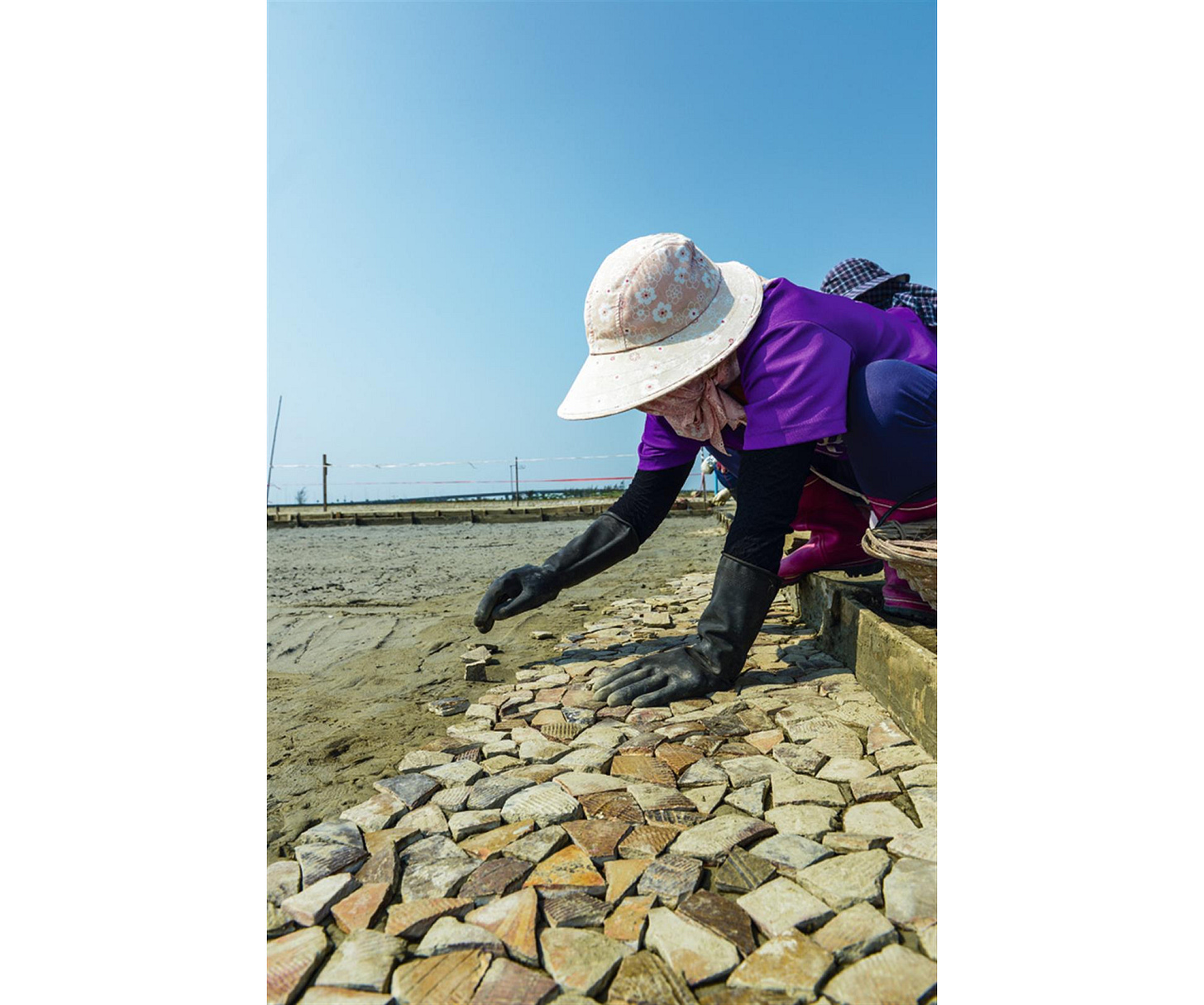


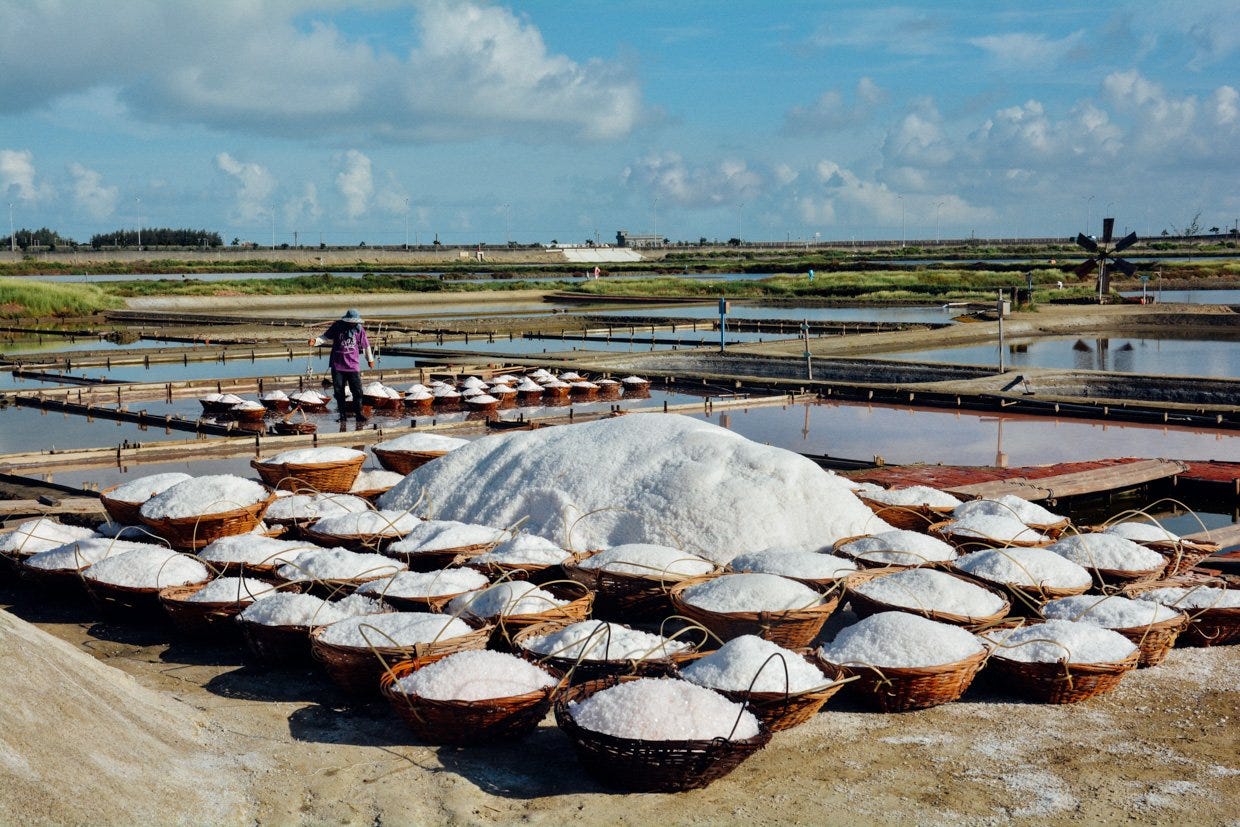

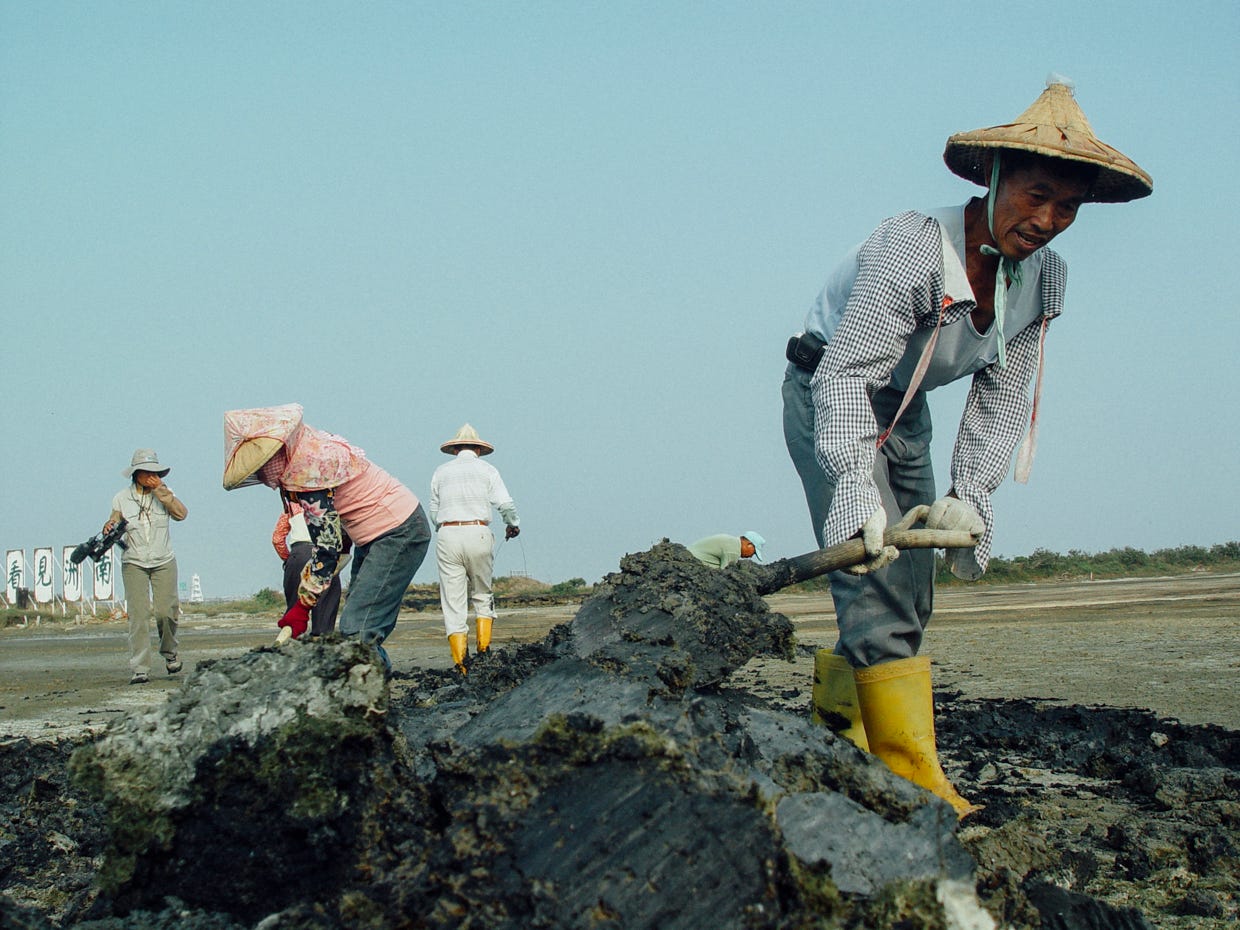



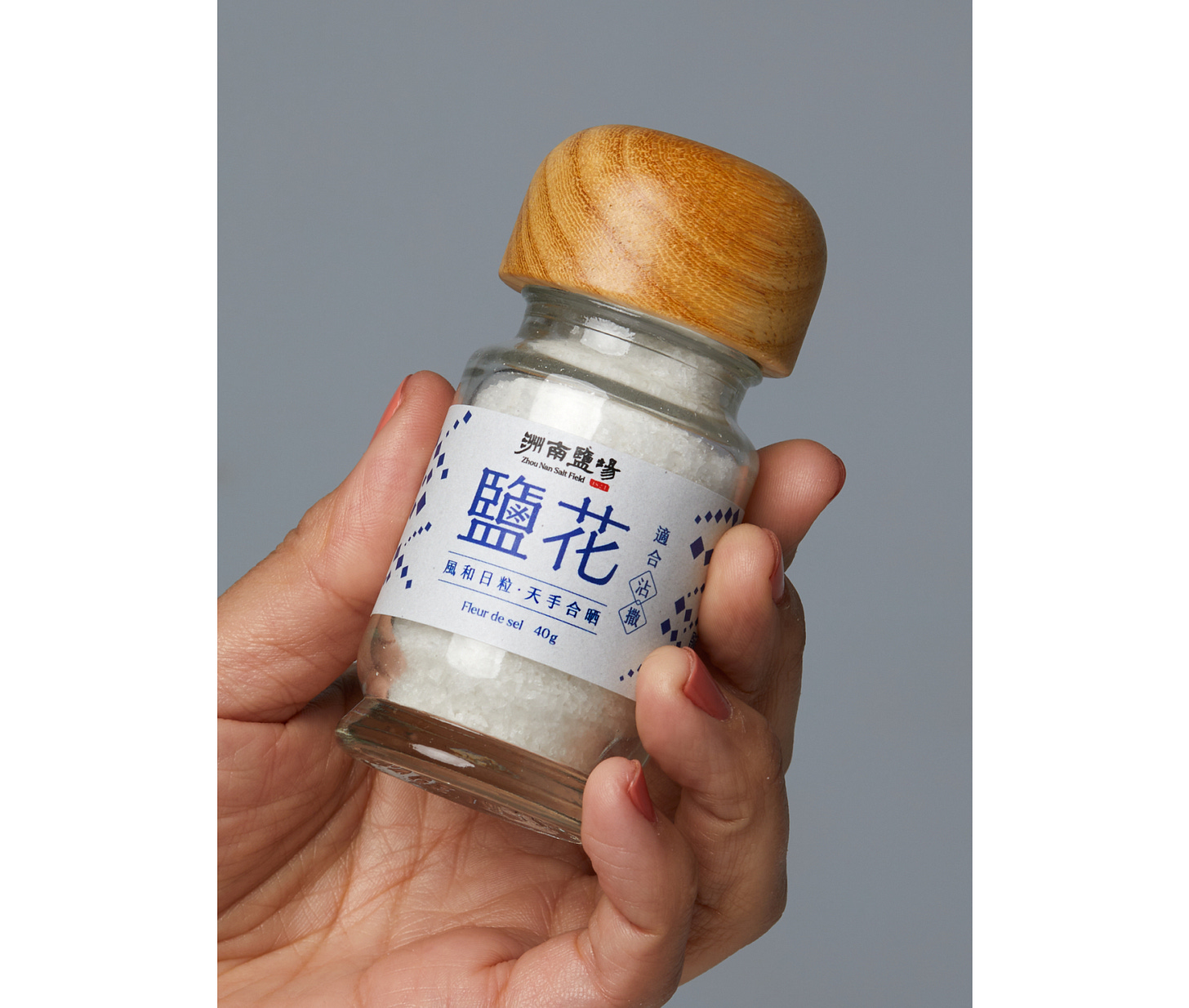
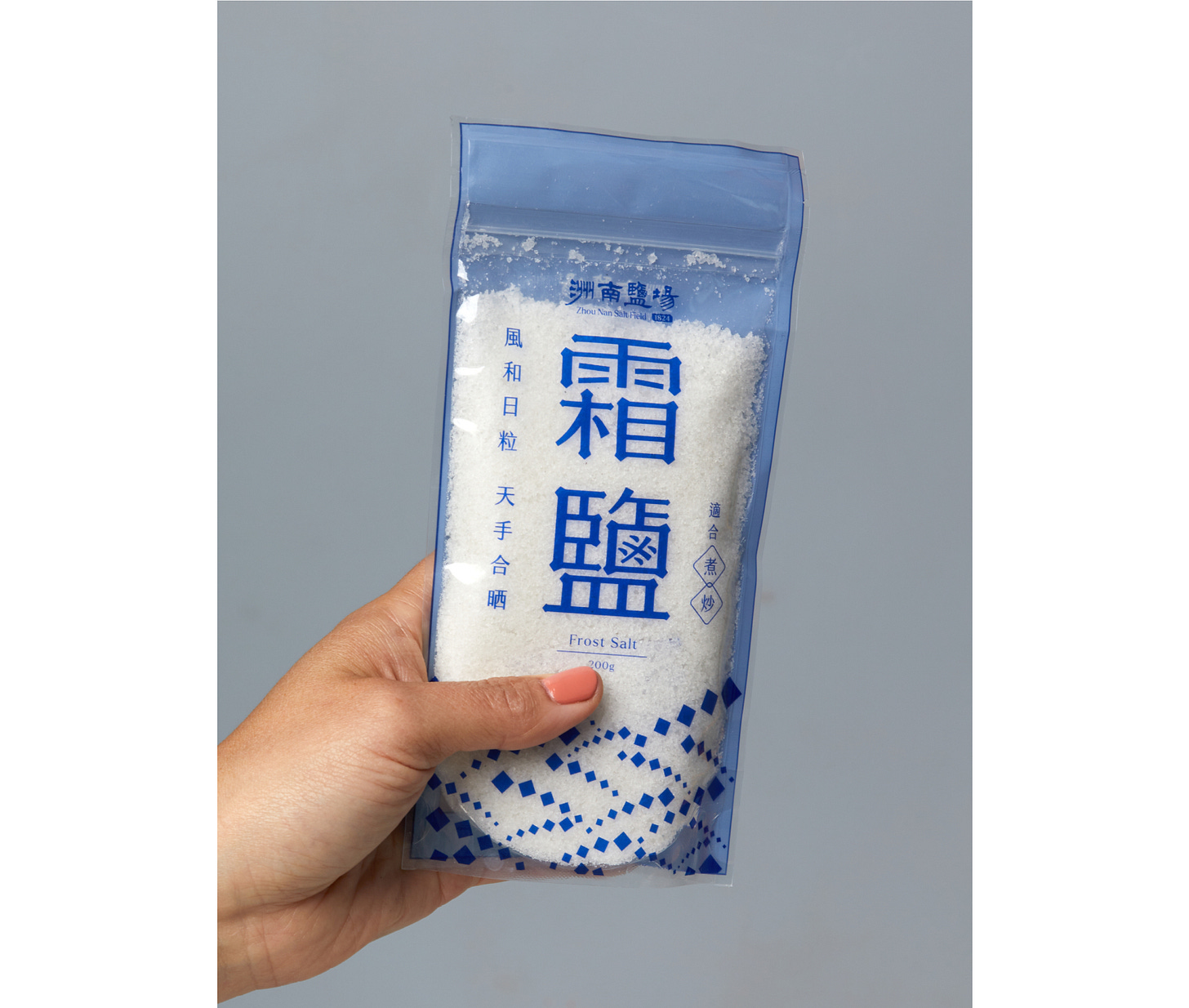



Awesome article! Amazing how they invested so much time, energy and resource into restoring the salt fields and now have it back up and running. A great success story.
Late to the party, but this was a lovely read! It reminds me of the Gujarat salt flats -- they're a unique seasonal desert saltworks in India. Much like in Qigu, the snow white crystals from these salt flats are a product of slow solar energy and human labor, that too in the summer heat. Salt farming still continues, but there are many social, health, and environmental problems. There's a video on the salt farming here: https://www.youtube.com/watch?v=vXDoofWyHP8
I'm also quite fascinated with the idea that salt farming was a precursor to tofu. I never knew!
Last, but not least, congrats to Lisa and the team for the F&W recognition!!